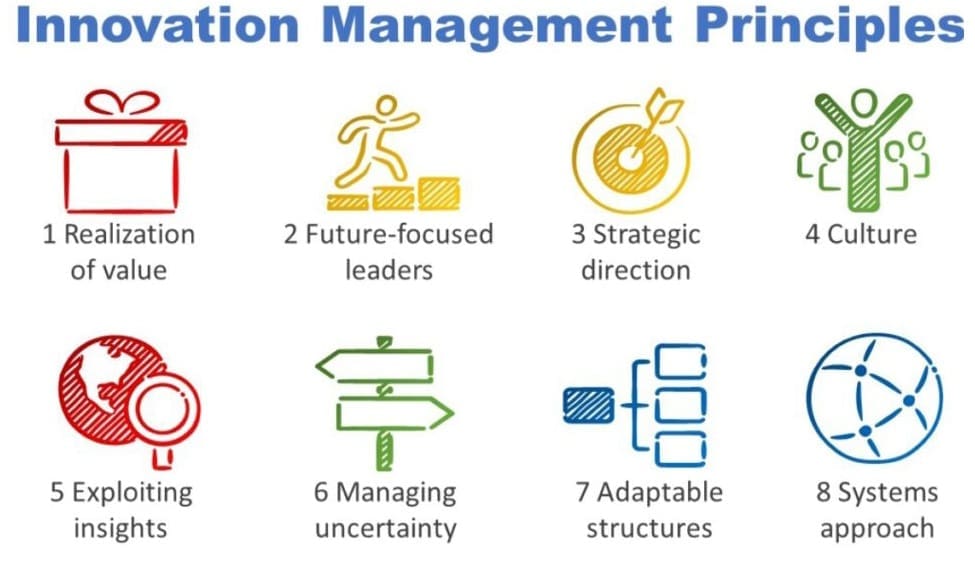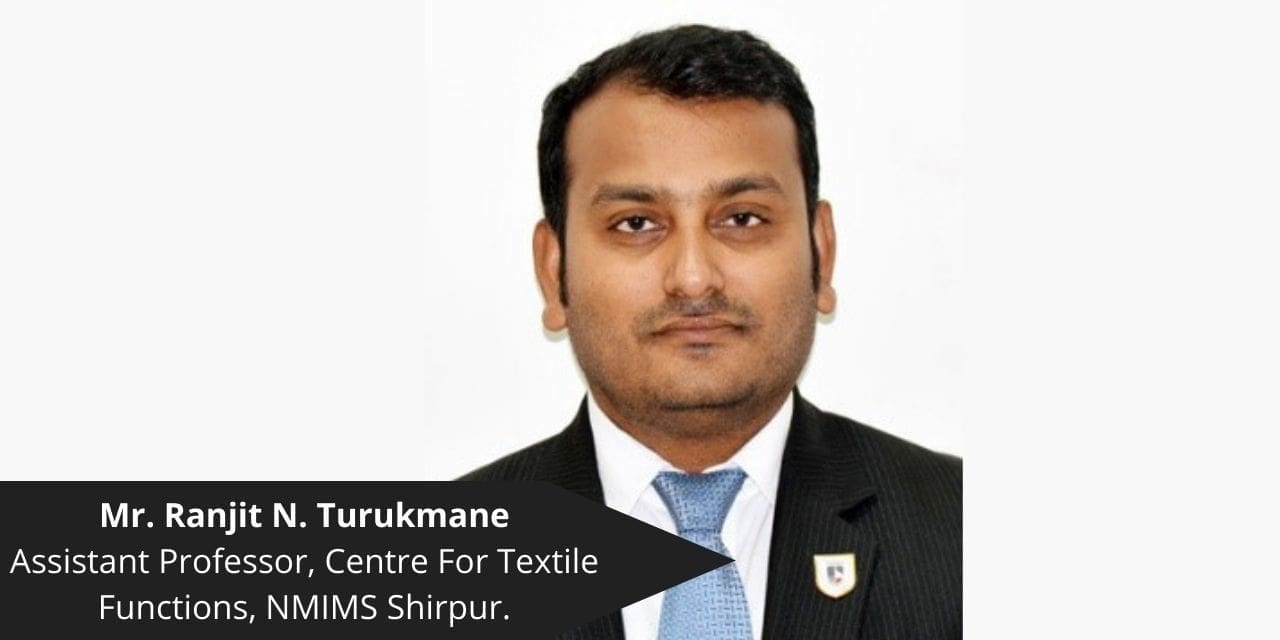Prof. Ranjit N. Turukmane M. Tech (Textile technology) from VJTI Mumbai, associating Centre for Textile Functions, Shirpur, District Dhule as an Assistant Professor and has a total 12 years’ of experience in teaching from SGGSIE&T Nanded and VJTI Mumbai. His area of expertise includes: Spinning, weaving, Technical Textiles, Man-made Fibres and Textile composites.
He has published 65 research papers in National & international Journals.
TEXTILE VALUE CHAIN has done exclusive interview with Prof. Ranjit Turukmane, Assistant Professor, Centre For Textile Functions, NMIMS Shirpur.
Tell us about your educational qualifications. What motivated you to complete your studies till masters degree? And why did you chose this stream?
I completed my Education in Textiles, B.Text.E from College of Engineering & Technology, Akola, M. Tech from VJTI Mumbai, DBM from Dr. BAMU Aurangabad & I am currently pursuing Ph.d. In Technology from NMIMS Shirpur. My father always encouraged me about Textiles, as a farmer we had a history of cotton growing fields. Hence, association and interest in textiles was there from childhood. Once joined, I decided to acquire the highest qualification in the learning process. I also completed Management courses in parallel to my textile profession.
As a part of being an academician, research is an integral part. How do you develop a research temperament or what motivates you to carry out research in your labs?
We have well established labs in the heart of the Textile industries and our institute is an integral part of Textile park located in Shirpur (Maharashtra). Being an academician, my 39-research papers have been published in International Journals and 26 research Papers have been published in Reputed National Journals. We send our students for 6 months in plant training with dedicated projects in various Textile industries of Pune, Nashik, Nagpur, Kolhapur, Vapi, Silvassa, Daman, Bharuch, Dahej, Dholka, Surat etc. Innovation is an integral part of any field of engineering and textile is no exception. Along with my doctoral programme small research projects are also floated to explore new avenues and this gives a fresh feel about creating knowledge in lesser known areas of textile value chain.
Would you like to share some interesting incidents/ instances that happened with you while working as a consultant to different industries or while teaching a batch of students.
Textile field is full of enthusiasm, every day is a new beginning for us, I used to learn many things daily. As such, these incidences coupled with experiences teaches a lot to become stronger in life.

What are the major differences in the industries earlier and now? Tell us about the work ethics as well apart from the technological advancements.
Textile world is growing and adopting rapid changes as far as the technological development is concerned. Over the last 20 to 25 years the technology has been evolved to reach a new high. Industry 4.0 to 5.0 and so on helping us to use developed concept for increasing production rate with better product quality.
How do you teach/ inform your students about the latest developments in the industry and make them ready for working in the industry?
As explained earlier, with technological advances on the shop floor, teaching-learning process in the universities have also changed a lot. With the penetration of internet, where ready information is available handy, teachers’ role has become more challenging. We need to deliver a content which is beyond the scope of digital world. Latest developments can be understood by reading international textile research journal, seminars, webinars, conferences and MDP programs. We insist students to read a lot from print media.
How do you think the pandemic has affected the education system? Tell us both the pros and cons.
One good thing has happened in pandemic: most of the students have become conversant with online platforms viz. Zoom, MS-Team & Google meet etc. One major drawback is that some students did not have access to internet and some had to drop out due to lack of financial support (due to loss of jobs).
How are management studies important for Textile students? How does it help in increasing productivity?
Worker handling and their management is a key of success for textile students in industries. Definitely it
helps in increasing the productivity and is ultimately useful for achieving certain goals of textile industry.
What is your take on the new trend of ‘Organic fibres’ especially use of Organic Cotton and Natural Dyes?
Natural fibers grown according to national organic standards without the use of toxic pesticides and
synthetic fertilizers are termed as organic fibres. These fibers are now find uses in many value added textiles, whereas natural dyes could be useful for sustainable product development. India has already taken a leap in this business area and in coming years it would be order of the day both in domestic and export markets.
What are some measures that need to be taken as a part of the Quality Management in Fabric Production?
The major measure needed is the comfort properties. It should contain the wearer and satisfy the requirement of the consumer. The manufacturers should ensure quality of high-grade fabrics targeted to RMG sector and fetch added revenue. Quality management is now the keyword of success in any business composition. Consumer is the king today.
What are some of the Natural Fibres that are being used? Where do they find applications?
Banana, sisal, corn and jute are the natural fibres used for decorative purposes and handicraft articles. They are used to enhance look, texture and appearance of the fabric. The readers may be aware that the north Maharashtra region is a major banana producing zone. Special projects are being proposed to popularise products based on banana fibre.
What would be your suggestions for start-ups in the textile manufacturing sector? How can these ventures grow, considering the immense competition that lies in this sector?
Initial amount should be funded to start with small set up and this will lead towards generating more and more awareness towards entrepreneurship program. If quality and costing are given more priority in any product, then competition will be reduced and product will be known in long run.
What are the different parameters that a textile technologist must consider before launching a product? How can he/she tap the market and cater to the different variety of customers?
Market survey and sales analysis of a particular product is imperative before launching any product. One can tap the market by continuously knowing the sales figure for a given sector and specific product which is increasing day by day. Logistics support is also another factor which needs to be emphasised on.
What is included in the concept of sustainable textiles? What are some measures taken by leading brands towards sustainable textiles?
Sustainable textiles is the concept of increasing the value and life of the product for which it is going to be used. Manufacturers are using it now a days in textile so as to increase the life of the human beings. Concentrated efforts are being taken by the industry to reduce carbon foot print and to make it as low as possible. Pest free farming, reduction and alteration of polluting chemicals in processing, low temperate operations to reduce energy consumption etc. are the few approaches where industries are investing to get rid of the threats to human life.
Would you like to add/ tell us something else apart from the questions asked above?
India is a country where majority people are with lower or middle income range, if they are made aware of these products and it utilisation towards the welfare of human beings, then it will be a second source of generating income to every individual, leading to generating revenue and making a profitable business in their own territory.

